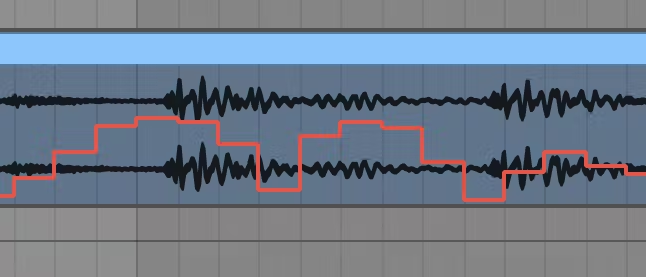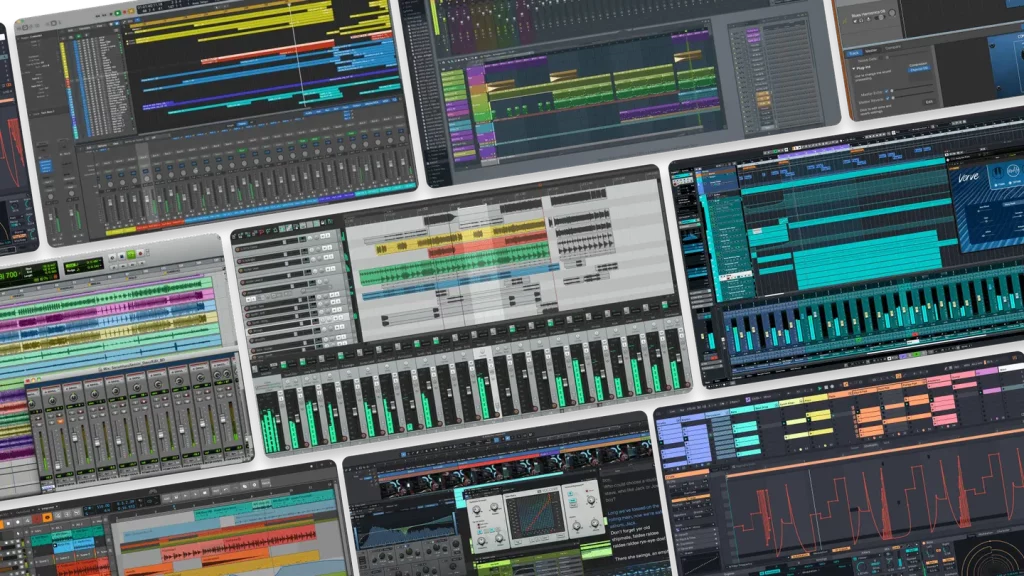The Role of Automation in Creating Dynamic Mixes
Automation gives you the ability to control parameters over time to add dimension, depth and movement to a track or mix. It’s an important tool that can turn a static mix into something engaging, rather than static and boring. By automating parameters such as volume, panning, and effects, you can shape and guide the narrative of your track, build tension and release, and give listeners an immersive journey.
Types of Automation and Their Applications
Volume Automation – Volume automation is the most basic type, providing control over a tracks/sounds loudness at different points in time. By controlling the volume of various supporting instruments in a track you can guide the listener through stripped back sections of track and built up, through to multi-layered climactic parts, adding emotional impact and clarity as each section of the song reaches its intended prominence.
Panning Automation – Create a sense of space by placing sounds and instruments from left to right across the stereo field. Automation can help to move sounds between positions, making the audio feel more spacious, three-dimensional and evolving.
Effect Automation – Automating effects such as reverb or delay can bring a dynamic quality to a track and add interest in specific sections. It can be useful at transition areas of tracks, such as increasing reverb on a main element to build anticipation before a drop or chorus.
Frequency Automation – Automatic EQs or filters gives you control over a track or sounds frequency spectrum over time. A great technique is to create filtered intros, outros & breakdowns, gradually opening up the frequencies, or closing them down within a section to hide or reveal the full spectrum of sound. It can also be handy for resolving conflicts in frequency-dense sections of track where masking can occur, automating an EQ or filter where these occurrences happen can help make way for other important elements to shine through.
Automation Techniques for Enhancing Dynamics

Gradual Transitions – Automation is great when used to smooth transitions between sections. You could gradually increase volume, brightness, or add delay into a build-up to add emotional weight, leading the listener naturally into the next section. This is especially useful in genres like electronic music or pop, where build-up and drops are essential.
Focus on Key Elements – Some elements in a mix take center stage, and others provide support. Automation helps by giving you the ability you to move focus from one element to another, for example, boosting the vocal slightly in a verse, then cutting it in the chorus to make way for a guitar riff. An ebb and flow of elements like this can create an engaging listening experience where every part of the mix has its time to shine.
Automation for Energy and Impact – Subtle adjustments of parameters over time using automation can enhance energy and impact. Raising the gain slightly during a chorus can make it hit harder in contrast to a softer verse.
How Automation Helps Mixes Sound More Natural and Professional

Adding Realism – Automation can add an organic and natural quality to a track by mimicking the dynamics of live performances and recordings. For instance, volume adjustments on a vocal track can create the illusion of the singer leaning in and out of the mic during the vocal performance, adding to the sense of intimacy and authenticity. Subtle panning and volume automation can make instruments feel more natural, preventing the mix from sounding flat or artificial.
Depth and Space – Automating reverbs, delays and stereo designers can help add a sense of depth, creating a three-dimensional space where sounds can exist and move. By adjusting these effects in different sections, you can create a space that feels open, immersive and evolving, a key factor for professional-sounding mixes.
Avoiding Overuse – While automation is a powerful tool to harness, it’s easy to overdo it. Excessive automation can lead to a disjointed mix that feels unnatural or jarring. Make sure each automation serves the track’s overall sonic goals.
Practical Tips for Getting Started with Automation in Your DAW

Choosing Tools – All major DAWs come equipped with automation tools in one form or another. Ableton Live, Logic Pro, FL Studio, and others will offer you automation lanes and tools to modulate most parameters. Learn your DAW’s automation capabilities and practice to hone your use of this important tool.
Tips for Smooth Automation – Working in sync with your track’s tempo, and to your tracks section boundaries is a good way to keep your automation neat and in context. Start small, add gradual changes that enhance the track rather than overhauling it. Using curves instead of abrupt changes will help create a more cohesive sound, ensuring the listener’s attention stays focused on the music.
Experimentation – Never be afraid to experiment with automation! Sometimes the best results are happy accidents brought about by experimentation! Try automating unique parameters, like distortion or even reverb size, to see how they impact your track. Try extreme automations, you might get some cool sounding artifacts or unexpected results. This experimentation often leads to interesting and unique textures and dynamics that add originality to your track or mix.
Remember – RouteNote Create subscriptions start from as little as $2.99. You also get 10 FREE credits to spend on samples along with access to our FREE sample pack bundle when you sign-up!
